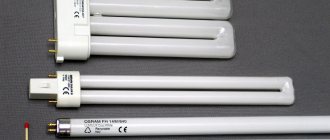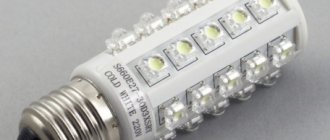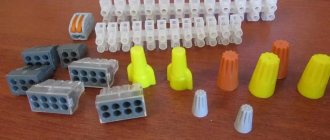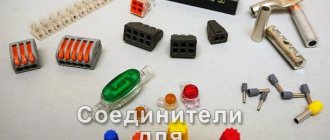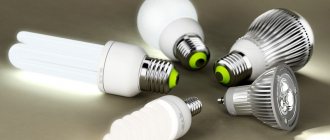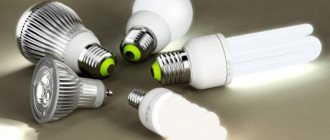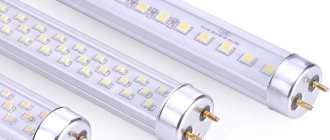It seems that LED lamps are the height of perfection. They are economical, durable and safe to use. They have firmly captured the consumer market, and you can’t imagine anything better. However, inventive thought does not stand still, and today we are already talking about new types of lamps - filament ones. They were invented by the Japanese, and they appeared quite recently - in 2008. Time will tell whether they will be able to displace LED ones; in this article we will try to figure out what they are and why they are needed.
What is a filament lamp
In simple words, a filament lamp is a combination of two types of light bulbs: LED and incandescent. The principle of operation is taken from the first, and the design features from the second.
Inside the glass bulb there is an LED strip connected, which is why the lamp got its name. The word "filament" is translated from English as "thread".
In terms of glow, a filament light source is almost no different from an incandescent lamp (it has a yellowish tint), but in design and functionality it is ahead of its competitor.
Varieties
At the moment, the following options for filament lamps are available in stores:
- with decorative shapes, purchased for lamps without lampshades;
- with a flask in the form of a burning candle;
- classic shape;
- in the form of a large ball.
Types of filament light bulbs.
The lamps are dimmable. If necessary, you can find models with narrow bases. Each of these nuances affects the price.
Design, design features of the Tomich filament lamp
Structurally, the emitter of such a lamp consists of three elements:
- Glass or sapphire base.
- Blue/red LEDs in the amount of 28 pieces.
- Phosphor coating providing white light with a special color temperature.
If we consider the design as a whole, the filament light source consists of the following elements:
- Base for E14 or E27.
- Transparent bulb with high light transmittance.
- Glass leg with elements that provide voltage supply to the LED strip.
- Filament parts.
- Driver (electronics) located in the base casing.
The driver takes up minimal dimensions and easily fits on the board. The latter, in turn, is mounted in the base of the light bulb.
This design allows the use of high-quality circuits with varying levels of complexity to reduce ripple.
What power does it produce?
The average filament power is about 1 W, and the voltage is 60 V. In general, the light bulb consumes from four to eight W and has the following parameters:
- luminous efficiency: 120 - 140 Lm/W;
- light temperature: up to 4500 K depending on the level of performance;
- service life 30,000 hours;
- ratio of output power with incandescent lamp, filament/LC: 2 – 25 W, 4 – 40 W, 6 – 60 W, 8 – 75 W.
For comparison, incandescent, LED and fluorescent lamps have power in the ranges: 10 - 500 W, 3 - 30 and 15 - 80 watts, respectively.
Conventional light sources show the lowest light temperature - 2700 K with a service life of 1000 hours.
As for fluorescent and LED lamps, they show the best characteristics: light temperature up to 6500 or 6400 K, and service life - 40 and 50 thousand hours, respectively.
Filament Spread
After the appearance of filament lamps, the demand for them began to grow and gradually reached the level of conventional LED products. The reason for this is simple - their design and the ability to achieve a large luminescence angle, without the use of additional optical systems.
Standard LED lamps, in a plastic housing, have an emission angle of up to 170 degrees. For filament ones it reaches 300 degrees.
This glow angle was achieved thanks to a transparent glass bulb and filaments arranged in a circle. Some models have non-standard shapes and the way the filaments are arranged (at an angle, crosswise, S-shaped), to ensure more uniform illumination.
Comparison table of filaments from different manufacturers
If you decide to buy, pay attention to the manufacturer. The declared parameters are different for everyone and are often overestimated by 10 percent.
| Lamp model | Price, $ | Declared power, W | Luminous flux, Lm | Analog of incandescent lamp, W | Service life, hours |
| Maxus filament A60 | 4-5 | 8 | 800 | 60 | 30000 |
| VIDEX NeoClassic (Filament) A60FA 2200K | 3-4 | 7 | 630 | 55 | 40000 |
| Philips LEDClassic A60 WW CL D APR | 7-8 | 7,5 | 806 | 70 | 15000 |
| OSRAM LED RF CL A60 2700K | 6-7 | 6 | 806 | 75 | 15000 |
| Lisma SDF-8W | 5 | 8 | 780 | 75 | 30000 |
| Lamp "Tomich" SA 220-8 | 3-5 | 8 | 800 | 75 | 15000 |
As you can understand from the table, products from different manufacturers produce different amounts of light at the same power. This is due to the fact that they receive a different specific luminous flux (Lm/W) for each watt of LED lamp power.
This is caused by different material suppliers or circuit design and driver operating modes.
Tomich filament light bulb driver
Using the LED principle requires installing a driver located inside the base. The purpose of the device is to reduce the current from the network to a value that is safe for LED elements.
The driver consists of the following elements:
- Fuse.
- Diode bridge rectifier.
- Smoothing capacitors.
- Pulse current regulator microcircuit with additional components. The circuit includes a diode, a choke, and an RF resistance capacitor.
The driver circuit deserves special interest. A fuse F1 is installed in the phase wire, instead of which you can put a resistance of up to 20 Ohms up to 1 W of power.
The elements of the scheme also include:
- diode bridge for rectifying current to a voltage of 400 - 1000 V, DB1;
- capacitor for smoothing ripples at the output DB1, E2;
- additional capacitance for supplying voltage to the circuit, E1;
- device driver, thanks to which the entire circuit works, SM7315P;
- capacity for filtering ripples at the output, E3;
- current sensor for adjusting the current in the light source circuit, R1 (the higher the resistance, the lower the current);
- resistance to reduce the current on the converter, R2;
- diode ensuring the operation of the converter, D1;
- storage inductance for voltage conversion, L
In fact, elements D1, L1 and a transistor switch form a typical pulse converter circuit.
How the scheme works
The principle of operation of the circuit is simple. The voltage supplied to the input is rectified using a diode bridge. Further, thanks to the action of the capacitance and capacitor, the current is smoothed.
On approaching the microcircuit, the current is converted into RF pulses, smoothed using a capacitor. Subsequently, power is supplied to the filament LED and returned to the network.
As for the driver, it includes a PWM controller and additional devices (comparators, multiplexers, etc.). They compare the real and nominal currents, and then send a signal to the PWM controller to make changes to the pulse duty cycle.
Where can I buy
Prices in the screenshot from the official website of the Feron representative - AxiomPlus online store. In principle, you can go in and look at the current prices for today.
Well, all this, of course, is manufactured in China. And analogues on AliExpress, however, are much cheaper, but shopping in China has its own characteristics. Let's not talk about them. I think you already know everything.
Cooling
There is a false misconception that LEDs do not get hot. On the contrary, they get very hot, and some microcircuits do not work for even several minutes without cooling.
For small LEDs housed in SMD-type housings, heat is transferred to the contact pads installed through them.
We already know that one filament consumes an average of 1 W. For comparison, SMD diodes for 1 W of power are designed to provide about 25-30 kW. see cooling device. And here the question arises about cooling the lamps.
Please note the following:
- The filament is a matrix.
- Structurally, diodes are soldered behind the matrix part, which emit a small amount of heat due to low power. For example, if you divide 1 Watt by 28 light bulbs, you get an average of 0.036 Watts per LED.
Helium or a special gas is used to remove heat, providing minimal heating to 55-60 degrees Celsius. This allows them to be used in luminaires with fabric, paper and plastic lamps. In this case, the filament lamp thread heats up to 100 degrees Celsius.
Experimental part
So, for the experiments, three lamps from different manufacturers were taken: a cheap Chinese lamp from Ebay from the company CroLED (in fact, the price is equivalent to Eglo), another lamp from Eglo from the local Leroy Merlin and the respected and well-known Phillips. Yes, it is worth noting that the light bulb on Ebay may NOT
have anything to do with CroLED.
CroLED: Chinese Ebay quality
Let's start with a filament lamp from the Middle Kingdom. The light bulb arrived from China in a simple cardboard box with a minimum of information on it (temperature, power and supply voltage. To be honest, the expectations were different, but the reality turned out to be much harsher. The ripple coefficient was 67% (!), it seems to me that this is a record In fact, the light went out and came on again with a frequency of 10 ms.The color temperature was less than what was indicated in the seller's store on Ebay.
NB:
All lamps presented in this article have a glass bulb.
And although it can withstand being dropped on the floor, be careful when handling them! Analysis of the light bulb revealed one interesting design feature - namely the driver. More precisely, its complete absence: the light bulb is powered through a banal MB10F diode bridge with a pair of resistors and a huge solid-state capacitor. But it’s compact!
The LEDs are located on a matte (!) substrate in the amount of 18 pieces. Each LED chip is made of a sapphire textured star-type substrate. The chips are absolutely small - smaller than a human hair.
Why is it profitable for manufacturers to make ultra-small LEDs?
Interest Ask.
One reason is purely economic. Small LED chips simply do not require additional gold contacts for uniform distribution of the electric field and, accordingly, uniform luminosity throughout the diode. Another reason is heat dissipation. It makes no sense to put a powerful large LED on a substrate that conducts heat relatively poorly. What about the temperature?
- the reader will ask. Yes, the temperature on the flask reaches approximately 40 degrees in 5-7 minutes and remains so for half an hour.
But let's now look under the bulb of our lamp. After removing the glass and measuring the temperature, it turned out that the threads very quickly (literally in 1 minute) heat up to almost 90 degrees, and in some places, apparently where the LEDs are located, the temperature reaches more than 100 degrees.
Eglo: ordinary lamp with ordinary characteristics
The next lamp from the Eglo company, which, by the way, has a representative office in the Russian Federation, generally pleased with its characteristics. Ripple at a frequency of 100 Hz was about 6%, while the color temperature and CRI fully corresponded to the declared characteristics.
A lyrical digression on the question of flickering
To one of the articles on D3, user justicebest wrote the following:
About 300 Hz is stated in GOST R 54945–2012 (1 Scope) and in SNiP 23–05–95 (clause 7.14). I also provide a link to a medical study.
Where it says:
Note - The illumination pulsation factor takes into account luminous flux pulsation up to 300 Hz. Illumination pulsation above 300 Hz, according to [1], does not affect general and visual performance.
Thus, flickering up to a frequency of 300 Hz is still not desirable.
Inside the lamp there are also four threads of LEDs, just like in the Chinese lamp. A driver based on a capacitor ballast is hidden inside. The LEDs are slightly larger - 113 by 57 microns - than in the previous case. However, they are extremely poorly fixed to the matte substrate.
As for the temperature, the light bulb quickly (in the same 5-7 minutes) warms up to a temperature of about 50 degrees. And the threads again show a temperature of ~90 degrees. Just like some kind of curse on the design of an incandescent lamp!
Phillips: quality comes first
The last Phillips bulb tested. Surprisingly, this bulb in an E14 housing demonstrates excellent compliance with the declared characteristics and has extremely low ripple levels.
What is the reason for this, since the E14 base is much smaller than E27?
- you ask yourself a question. The genius is simple: Phillips has good, very good engineers who are able to create an ultra-compact driver (flyback converter) so that it fits into an E14 cartridge, while the driver provides extremely low ripple levels (<1%).
The lamp itself has only two LED filaments, as it consumes only 2.3 W. The LED chips are placed on a transparent substrate and are similar in size to those used in Eglo lamps, but with a different substrate texture - “shield”. As noted above, you cannot argue against the laws of thermophysics.
In about 10 minutes, the lamp bulb warms up to ~45 degrees (two filaments “warm up” the entire lamp more slowly). However, the temperature of the filaments without a glass bulb was still 95 degrees, in some places - we repeat, most likely at the place where the LED chips are attached to the substrate - reaching values of 110-120 degrees.
In order not to be unfounded when making a verdict regarding filament lamps, we will add a few photographs of already familiar IKEA lamps and powerful smart Prestigio lamps, which we will talk about next time. The body of an IKEA lamp warms up to 75 degrees within half an hour, and a smart Prestigio lamp to 58. At the same time, the SMD LEDs of Prestigio lamps, for example, at maximum power only heat up to the “safe” temperature indicated at the very beginning of the article, 60-70 degrees.
Advantages and disadvantages of filament lamps
Before switching to filament light sources, it is necessary to understand their strengths and weaknesses.
Advantages:
- Economical.
- Uniform glow in all directions, an excellent solution for lighting a summer house.
- Stylish appearance, which allows them to be used in open lamps.
- Wear resistance.
- Long service life.
- Versatility of use and the possibility of installation in many models of lighting devices.
- Excellent color rendition.
- Minimal heating due to gas pumped inside.
- High degree of brightness.
- Easy to dispose of as household waste.
Disadvantages of filament products:
- High price.
- A fragile flask that requires careful handling.
- When the voltage is unstable, flickering appears and the quality of light deteriorates.
- Impossibility of repair.
- Designed only for 220-volt networks.
- The presence of two types of socles - on E14 and E27.
- Variation in quality.
- Complaints about short service life.
- The presence of a dead zone under the light source when the bulb is positioned vertically (details below).
All in all
Thus, filamentous LED lamps are a completely new word in the development of LED technologies. They have all the advantages of older generations, and, at the same time, offer completely new, more effective and practical solutions.
Well, paired with the original appearance, filament LED lamps will become not only functional, but also an unusual and interesting decorative element of any interior.
And you can buy filamentous LED lamps at the best price in Moscow on our website led-eleganz.ru, where only original products of the highest quality are presented.
What is a meter zone
When a filament lamp glows, if the bulb is positioned strictly vertically, a so-called zone of less illumination is formed under it, which can be called “dead”. The lighting level in it is two times less than in the main lighting zone.
At a distance of one and a half meters, the spot reaches a size of 50 cm. Accordingly, it increases as it moves away from the light source.
The shape of this spot, depending on the model of the llama, the number and location of the spirals, is different.
Check pulsation when purchasing
When purchasing a filament lamp, it is important to check the ripple. Ignoring this requirement may lead to disappointment when using the device as the main lighting in a bedroom, living room or other room.
According to the laws of the Russian Federation (PP No. 1356 of October 10, 2017 “On approval of requirements for lighting devices”), the sale of light sources with a pulsation of more than 10% and a CRI of less than 80 is prohibited.
The driver is responsible for pulsation and in high-quality products this figure does not exceed 1%.
And you need to remember that inside even light bulbs of the same shape there can be two different drivers. One with normal pulsation and high-quality parts, and the second one made using cheap elements.
Scope of use
Modern models are very relevant, as they are suitable for any area.
- The light distribution angle is 360 degrees, which increases the brightness and illumination of the room. Such characteristics are necessary for the operation of plants and factories.
- Due to its small size, as well as the variety of shapes and colors of the lamp, it can be used as a decorative element in construction and interior design.
Where are filament lamps used?
- Due to its resistance to temperature changes and power surges, it is suitable for lighting market and shopping areas, large centers, cafes, and restaurants.
- Due to the operating time (30,000 hours), it can be used for home use. It is economical and reliable.
You might be interested in Features of a fluorescent lamp
A significant advantage here is versatility - practicality of application.
Determining the temperature of the glow
Few people know that the glow temperature can be easily determined by the shade of the phosphor even without screwing the lamp into the socket.
Here it stands out:
- Lemon shade - 4500 K (neutral white).
- Yellow - 3000 K (warm white).
- Orange - 2500 K (with an even warmer tint).
One glance is enough to determine the oriented temperature.
Results
Filament lamps are an alternative to LED products that offer better performance and a stylish look. Such models are characterized by versatility, high light output, a huge selection and the absence of a dead zone around the perimeter.
Thanks to their long service life, the devices quickly pay for themselves and provide high-quality lighting.
We must not forget about the shortcomings that prevent such products from “exploiting”.
Today this is the fragility of the flask, high price and pulsations with low quality of the product and electricity.
Brief overview of manufacturers
It must be remembered that inexpensive, low-quality fakes can ruin a person’s vision, since blue light can leak through a low-quality phosphor. Therefore, it is worth purchasing proven brands and not experimenting on your health. It is proposed to consider companies offering the highest quality filament lamps on the Russian market:
- “Lisma” is good quality from a Mordovian manufacturer. The cost is lower than that of imported lamps, the warranty is 2 years.
- Philips – the quality of the brand is beyond doubt, tested by time and consumers.
- Osram is a German manufacturer of lighting equipment with an impeccable reputation. A wide range of shapes - ball, candle, pear. Introduces dimmable lamps (with dimming function) for sale, the cost of which is higher than that of conventional lighting devices.
- “Rusled” is a Russian company of average price and quality of goods. Produces so-called Tomich lamps. The service life is lower than that of imported brands and is 15,000 hours. The luminaires have low ripple of 1 to 2% and are affordable, making them attractive in the market.
- Maxus is a Ukrainian manufacturer, one of the recognized leaders. The product is of high quality, affordable price, and comes with a 36-month warranty. The brand also produces lamps with a dimmer.

